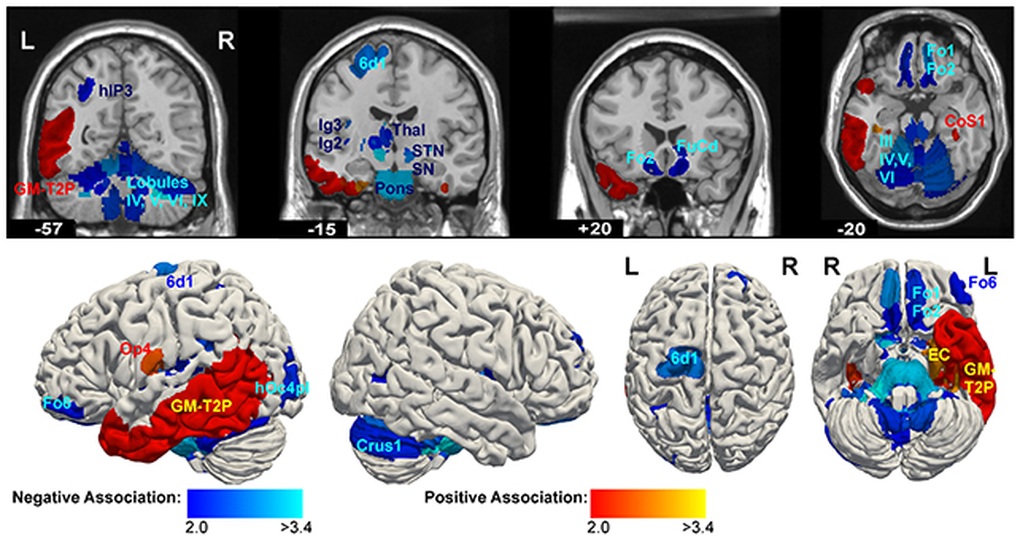
A groundbreaking study has revealed that people with personality disorders have a distinctive brain structure that is distinctly different from the rest of the population. The discovery is expected to open up new avenues for understanding and treating this complex condition.
The study was conducted by scientists at the Jülich Research Center and RWTH Aachen University in Germany. The team compared brain scans of men diagnosed with mental illness with a control group of men who did not have the illness.
“Mental illness is one of the strongest risk factors for severe and persistent violence,” the researchers stressed in the published paper.
To clarify the neurological basis of this, the team examined 39 male subjects with and without psychosis, using structural magnetic resonance imaging (MRI) and the Psychopathy Checklist-Review (PCL-R).
The PCL-R is an assessment tool that combines interviews, professional assessments, and formal records, producing three scores: an overall score, a factor 1 score (measuring interpersonal and emotional characteristics), and a factor 2 score (measuring impulsive and antisocial behavior).
The analysis showed that brain structure correlated with a factor of 1 with only minor differences. However, when factoring in a factor of 2, the researchers found significant reductions in certain brain regions in high scorers.

The affected brain regions were identified as playing important roles in controlling involuntary actions, processing emotions, interpreting sensory information, motivation, and decision-making.
In other words, these functions are key factors that shape how we respond to our surroundings.
Notably, the brains of psychopaths were found to be on average 1.45% smaller than those of controls. Although difficult to interpret precisely, this may suggest developmental problems in people classified as psychopaths.
This was a relatively small study, so more extensive research is needed to fill in the gaps. However, the initial results suggest that antisocial and impulsive behavior in people with psychopathic personality traits may be heavily influenced by the neurotic traits they possess.
Scientists also recommend that further studies look at other possible reasons for these brain structure differences, such as drug abuse or traumatic experiences, to help more clearly establish a causal relationship.
“In summary, these findings are consistent with the multidimensionality of PCL-R structure and show a particularly strong association between antisocial behavior and smaller volumes in widespread subcortical regions,” the researchers concluded.
Although the degree of psychopathy can vary from person to person, it often results in chronic acts of aggression, violence, lack of empathy, manipulative behavior, and impulsive, reckless tendencies.
With a better understanding of this condition and the unique features of people's brains, we may be able to identify more effective treatments in the future.
Source: https://dantri.com.vn/khoa-hoc/nghien-cuu-tiet-lo-diem-chung-trong-nao-cua-nguoi-mac-chung-thai-nhan-cach-20250704010927662.htm


![[Photo] Hanoi morning of October 1: Prolonged flooding, people wade to work](https://vphoto.vietnam.vn/thumb/1200x675/vietnam/resource/IMAGE/2025/10/1/189be28938e3493fa26b2938efa2059e)
![[Photo] Keep your warehouse safe in all situations](https://vphoto.vietnam.vn/thumb/1200x675/vietnam/resource/IMAGE/2025/10/1/3eb4eceafe68497989865e7faa4e4d0e)
![[Photo] President of the Cuban National Assembly visits President Ho Chi Minh's Mausoleum](https://vphoto.vietnam.vn/thumb/1200x675/vietnam/resource/IMAGE/2025/10/1/39f1142310fc4dae9e3de4fcc9ac2ed0)

















![[INFOGRAPHIC] DJI Osmo Nano Action camera, super compact, 4K 120fps recording](https://vphoto.vietnam.vn/thumb/402x226/vietnam/resource/IMAGE/2025/10/1/8408489112ee446dab897373255c827e)










































































Comment (0)